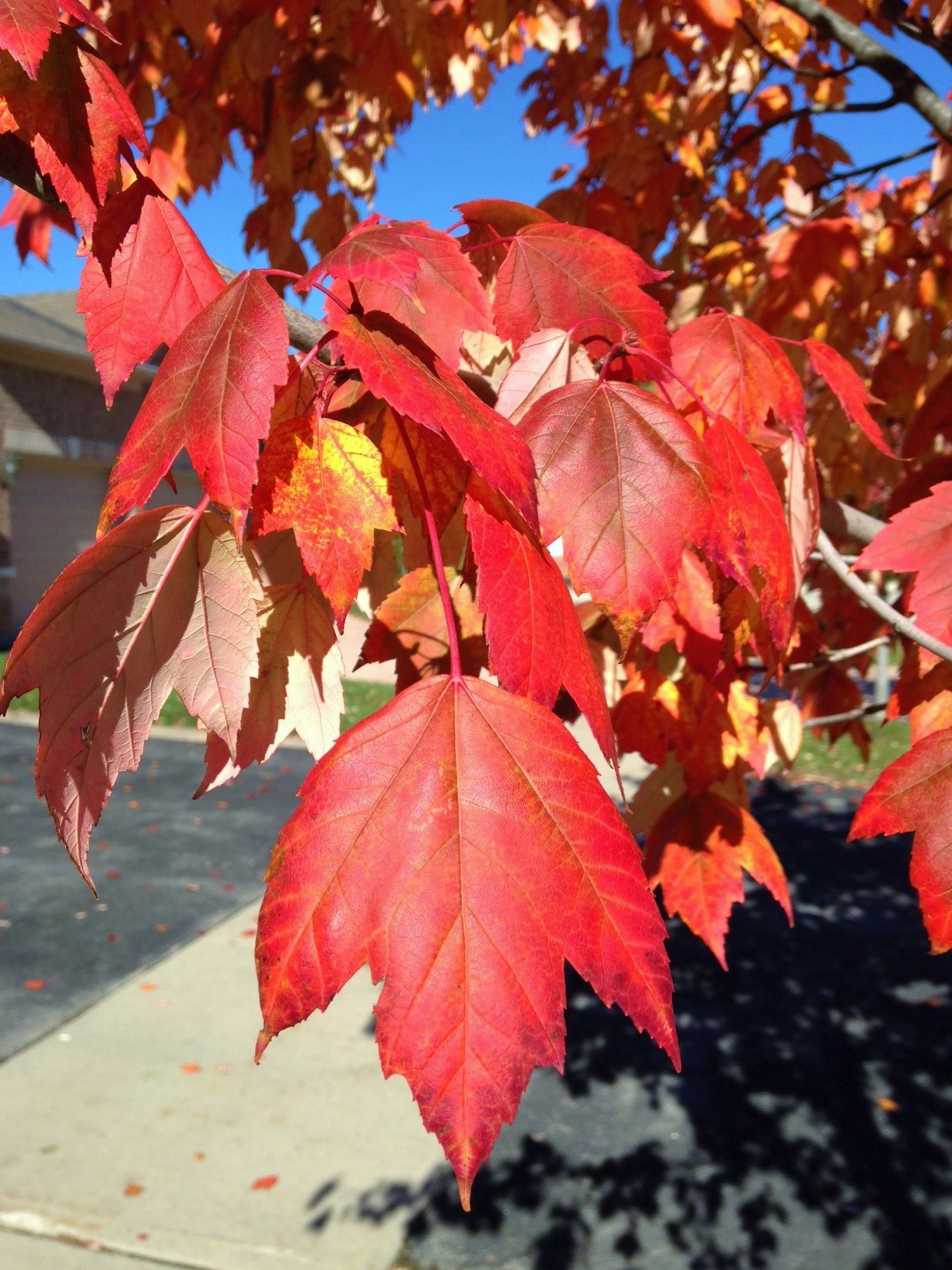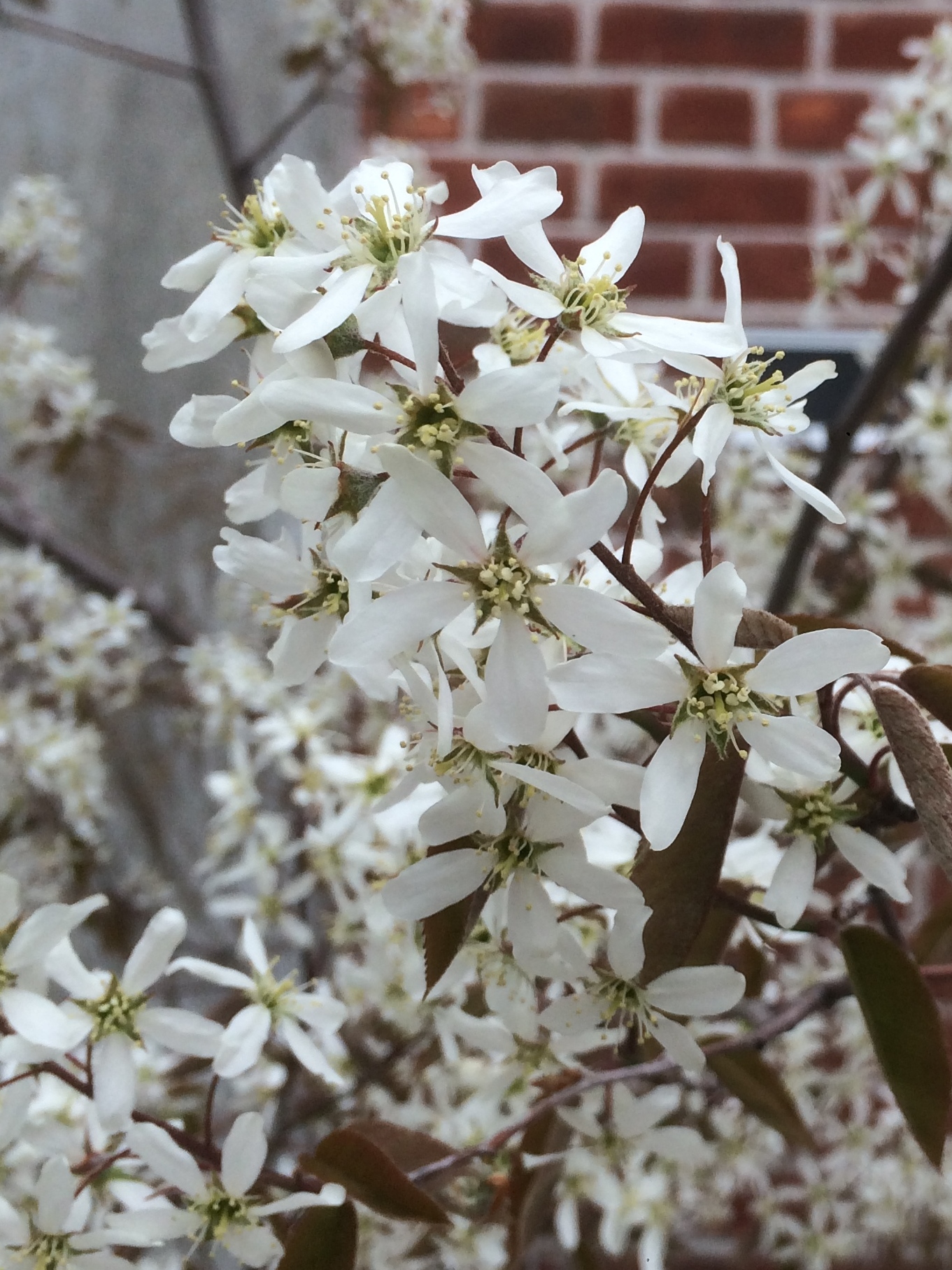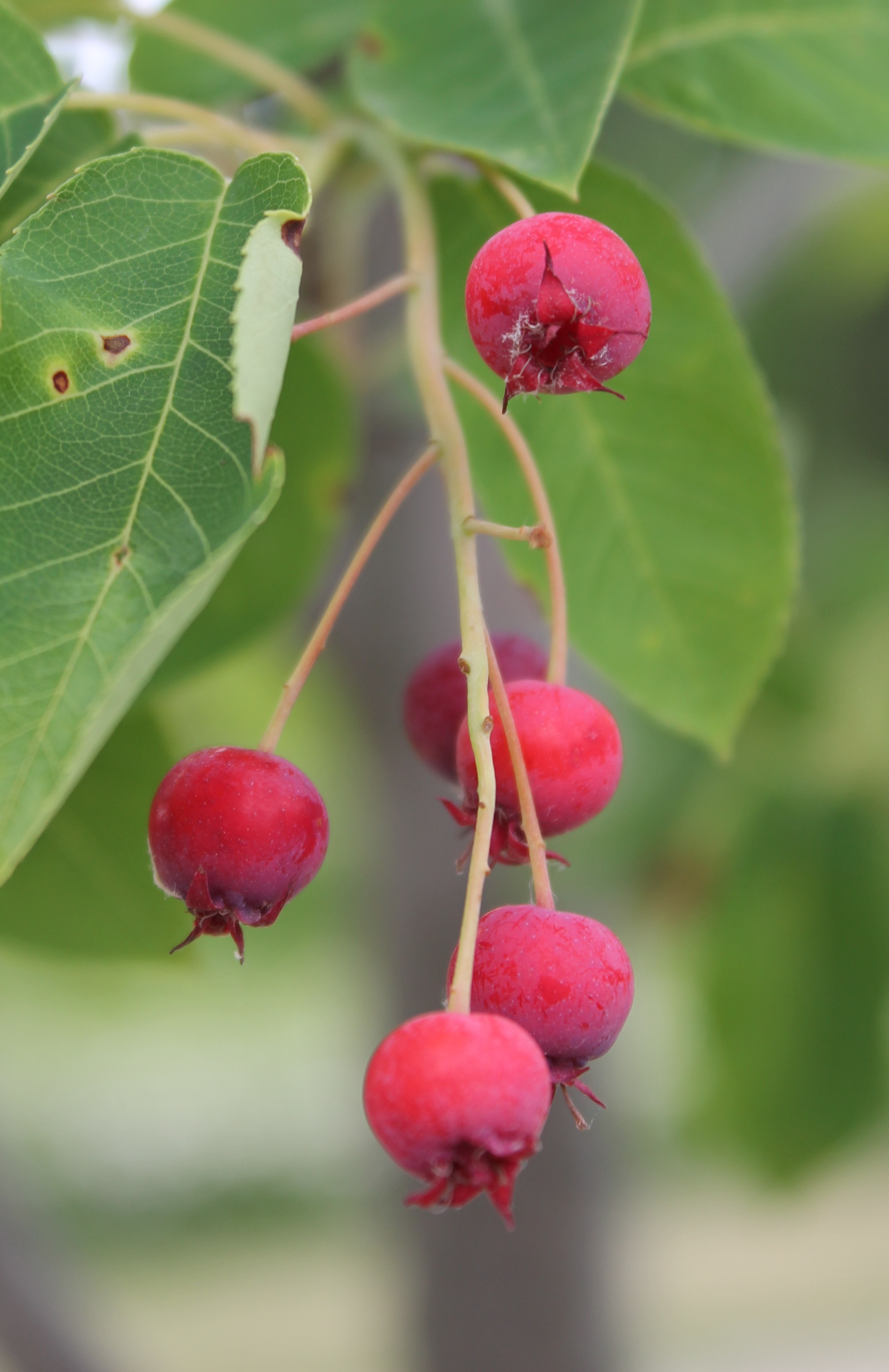All of this burrowing and surviving takes a lot of energy! At the end of winter, bees have depleted their food sources and stored energy. They emerge after a long winter’s sleep in need of a good meal! Trees and shrubs that bloom early in spring before perennials begin to flower give a boost to bees, supplying them with much-needed pollen and nectar.
Here are three native trees/shrubs that bloom early in spring – perfect examples of why #BeesLoveTrees
Red maple (Acer rubrum)
Our native red maple is one of the first trees to produce flowers in early spring. With ample amounts of nectar and pollen, this early bloomer provides much-needed nutrition which helps stimulate brood rearing and colony building. This is especially true for native bumble bees. Due to their larger body size and amount of hair, bumble bees are able to fly in colder temperatures and even in the rain and are therefore among the first bees to emerge and take advantage of early food sources like the red maple.
Flowers appear very early spring before the leaves emerge.

As its name implies, the red maple’s emerging new growth leaves, leafstalks, twigs, flowers and fruit are tinged with red.

The leaves are green all summer, but turn a brilliant red to yellow in the fall making this tree a beautiful addition to any yard.
Tip: The Crimson King Norway maple is often mistakenly referred to as red maple because its leaves are a dark red/burgundy colour all summer. Norway maples are invasive species. Their shallow, dense roots and heavy shade prevent most other plants (including grass) from growing beneath them. Avoid making the mistake of asking for a “red maple” at a nursery as you will likely get a Norway Maple Crimson King. Use the Latin name instead – Acer rubrum!
Eastern Redbud (Cercis canadensis)
The Eastern redbud is a shrub with stunning pea-like, rose-purple flowers which bloom profusely on bare branches in early spring. Bees are attracted the redbud’s vibrant flower colour against the stark background of bare branches.

It does well in partial shade and prefers a loamy to sandy soil. It has large heart-shaped leaves that provide excellent privacy throughout summer.

Tip: Redbud is a Carolinian species, so in Toronto, it is on the northern edge of its range. Only plant redbud in locations that are sheltered from wind and extreme temperature fluctuations, such as small backyards.
Serviceberry (Amelanchier laevis or Amelanchier canadensis)
A small, delicate tree, the serviceberry signals the beginning of spring. It awakens from sleep when the ground has thawed with showy, mildly fragrant clusters of white flowers.

Flowers give way to small, round edible berries which resemble blueberries in size, colour and taste. They are delicious eaten right from the tree – that is, if you can beat the birds to them! You can also use the berries in jams, jellies, and pies.

Tip: Serviceberries can tolerate a wide range of soil and light conditions. However, they are best planted in partial to full sun as they often develop powdery mildew on their leaves if planted in full shade.
The #BeesLoveTrees campaign is supported by the Ontario Power Generation Regional Biodiversity Program. Since 2018, we continue to educate on native bees, pollinators and other wildlife through the #BackyardBiodiversity campaign, in partnership with the Toronto Wildlife Centre and Ontario Power Generation.
Photos by Brenna Anstett, Erin MacDonald, Jackie Hamilton, and Janet McKay.
Jillaine Yee is LEAF’s Communications and Fundraising Coordinator.
LEAF offers a subsidized Backyard Tree Planting Program for residential and commercial private property. The program is supported by The City of Toronto, The Regional Municipality of York, The City of Richmond Hill, The City of Markham, the Town of Newmarket, the Town of Ajax, Toronto Hydro and Ontario Power Generation. For details on how you can participate, visit http://yourleaf.org.
